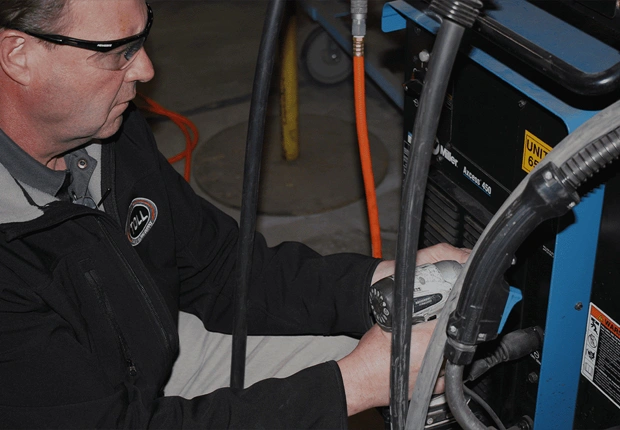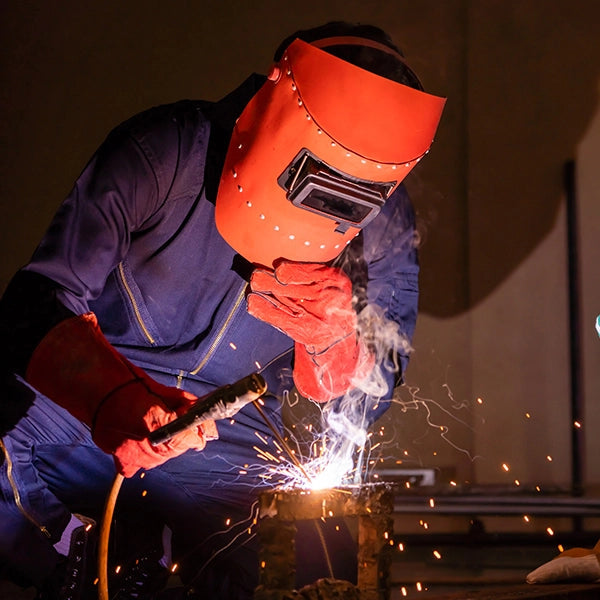Tips for avoiding distortion in Montana Mobile Welding and Repair Welding projects
Common Welding Repair Service Issues and Just How to Address Them Effectively
Welding repairs frequently run into an array of issues that can threaten the honesty of the end product. Typical troubles include poor infiltration, porosity, and misalignment, amongst others. Each problem presents one-of-a-kind difficulties that require details strategies for resolution. Comprehending these problems is vital for welders aiming to boost their end results and skills. This conversation will discover these typical welding fixing issues and reliable techniques to address them.
Insufficient Infiltration
Poor infiltration happens when the weld metal stops working to fully fuse with the base material, causing weak joints and prospective structural failures. This problem frequently originates from insufficient warm input, wrong electrode angle, or inappropriate welding speed. Welders might come across insufficient penetration as a result of a mistake of the needed criteria for a certain product thickness or kind. In addition, contamination on the base material's surface area can hinder effective bonding, worsening the trouble. To address inadequate penetration, welders need to assure ideal settings on their devices and keep a tidy work surface area. Regular examination of welds is recommended to determine any type of shortages early, enabling prompt adjustments and the prevention of compromised architectural honesty in bonded assemblies.
Porosity
Porosity is a typical flaw in welded joints that materializes as tiny gas bubbles entraped within the weld steel. This defect can compromise the integrity of the weld, causing minimized toughness and prospective failure under stress and anxiety. Belgrade Welding. Porosity generally arises from contamination, dampness, or inappropriate welding methods, which allow gases to escape into the molten weld pool. To attend to porosity, welders should assure proper surface preparation, preserve a tidy workplace, and use appropriate welding specifications. In addition, choosing the appropriate filler material and protecting gas can minimize gas entrapment. Routine assessment and screening of welds can assist determine porosity early, ensuring prompt rehabilitative activities are taken, consequently maintaining the top quality and integrity of the welded structure
Misalignment
Misalignment in welding can arise from various variables, consisting of improper configuration and thermal expansion. Comprehending the source is crucial for reliable resolution. Numerous adjustment strategies are readily available to straighten components and assure structural honesty.
Sources of Imbalance
Welding misalignment often stems from a variety of underlying issues that can endanger architectural honesty. One primary reason is improper fit-up of elements prior to welding, which can lead to voids and irregular surface areas. Variants in thermal growth during the welding process can additionally cause distortion, specifically if the materials being signed up with have different coefficients of growth. Furthermore, insufficient securing and fixturing may stop working to hold elements safely in position, leading to activity during welding. Badly maintained equipment, consisting of welding equipments and devices, might introduce variances in the weld bead, more adding to imbalance. Driver mistake, stemming from insufficient training or experience, can likewise play a significant role in creating misaligned welds.

Improvement Methods Available
Addressing imbalance efficiently needs a mix of restorative strategies customized to the particular concerns at hand. One common technique is using jigs or fixtures to hold components in the correct position during welding, making sure consistent placement. Additionally, preheating the products can aid lower distortion and improve fit-up. For considerable misalignment, mechanical adjustment methods, such as making use of hydraulic jacks or clamps, can be used to fix the position before welding. Post-weld warm therapy may likewise be required to eliminate stress and anxieties brought on by imbalance. Cautious assessment and adjustment during the configuration phase can protect against imbalance concerns from becoming considerable issues, advertising a smoother welding process and improving general architectural integrity.
Distortion
Distortion is an usual challenge in welding that can occur from various factors, including unequal heating & cooling. Understanding the causes of distortion is crucial for carrying out reliable prevention methods. Resolving this concern not just enhances structural honesty however additionally improves the overall quality of the weld.
Root causes of Distortion
When based on the intense heat of welding, products frequently undergo adjustments that can bring about distortion. This phenomenon primarily occurs from thermal development and tightening during the welding procedure. As the weld area warms up, the product expands; upon air conditioning, it acquires, which can develop interior anxieties. On top of that, uneven home heating across a workpiece can exacerbate these tensions, causing bending or flexing. The kind of product additionally plays a considerable role; steels with varying thermal conductivity and coefficients of development might react in a different way, bring about unforeseeable distortions. In addition, inadequate joint layout and insufficient fixturing can add to imbalance during welding, raising the chance of distortion. Understanding these reasons is necessary for efficient welding fixing and prevention strategies.
Prevention Techniques
Reliable avoidance methods for distortion during welding focus on regulating warm input and guaranteeing appropriate joint layout. Preserving a constant heat input assists to lessen thermal expansion and tightening, which can bring about distortion. Making use of techniques such as preheating the workpiece can additionally minimize the temperature level gradient, promoting uniform heating. In addition, selecting appropriate joint styles, such as T-joints or lap joints, can improve security and decrease anxiety focus. Applying appropriate fixturing to secure the work surfaces in position additionally aids in maintaining placement during the welding process. Staggered welding sequences can distribute heat extra uniformly, avoiding localized distortion. By applying these strategies, welders can considerably reduce the possibility of distortion and improve the total top quality of their welds.
Cracking
Fracturing is a common problem encountered in welding repairs, commonly resulting from numerous factors such as improper cooling prices, product choice, or poor joint prep work. The occurrence of splits can significantly compromise the stability of the weld, bring about potential failures during operation. To address this issue, welders need to first examine the origin triggers, making sure that products work and appropriately picked for the specific application. In addition, regulating the air conditioning rate during the welding procedure is important; fast cooling can induce stress and cause breaking. Appropriate joint layout and preparation additionally add to lessening the risk. Executing these strategies can boost weld quality and resilience, ultimately decreasing the possibility of splitting in finished weldments.

Incomplete Combination
A considerable concern in welding repair work is incomplete fusion, which occurs when the weld steel does not sufficiently bond with the click here base product or previous weld passes - Montana Mobile Welding and Repair Belgrade Fabrication. This problem can lead to weaknesses in the joint, possibly endangering the integrity of the welded framework. Factors contributing to incomplete blend include inadequate heat input, improper welding strategy, and contamination of the surface areas being joined. To address this problem effectively, welders need to guarantee appropriate pre-weld cleaning and surface preparation, as well as change their welding parameters to achieve appropriate infiltration and blend. Normal examination throughout the welding process can also help recognize incomplete fusion early, permitting prompt restorative actions to enhance the overall top quality of the weld
Overheating
While welding repair work can boost architectural integrity, overheating provides a substantial difficulty that can lead to product deterioration. Too much warm during welding can alter the mechanical residential or commercial properties of metals, causing decreased toughness, raised brittleness, and bending. This phenomenon is particularly critical in high-stress applications where architectural reliability is vital. Recognizing getting too hot can include aesthetic inspections for staining or distortion, in addition to keeping track of temperature throughout the welding process. To alleviate the risks associated with getting too hot, welders ought to use proper techniques, such as controlling heat input, changing traveling speed, and making use of appropriate filler products. Furthermore, executing pre- and post-weld warmth therapies can aid restore material homes and enhance the total high quality of the repair work, making certain long-term efficiency and security.
Regularly Asked Concerns
What Are the Common Indications of a Welding Problem?

Exactly How Can I Test My Welds for High quality?
To check welds for top quality, one can use visual assessments, ultrasonic screening, and radiographic techniques. Each technique ensures architectural honesty, determines problems, and validates adherence to specified requirements, ultimately enhancing the integrity of the bonded joints.
What Safety Preventative Measures Should I Take While Welding?
When welding, one ought to focus on safety and security by putting on appropriate individual protective devices, making sure appropriate ventilation, safeguarding flammable products away, keeping a clean office, and knowing surroundings to stop mishaps and injuries.
Can I Fix a Weld Without Redesigning the Entire Joint?
Repairing a weld without redesigning the whole joint is possible, relying on the damages (Montana Mobile Welding and Repair Welding). Methods such as grinding, adding filler product, or using a welding procedure can efficiently address specific imperfections while preserving the bordering framework
What Equipment Are Vital for Reliable Welding Repairs?
Crucial tools for reliable welding repairs consist of a welding device, wire brush, mill, safety equipment, clamps, and filler materials. Each device plays an essential role in making certain high quality and safety during the fixing process. Porosity usually develops from contamination, moisture, or inappropriate welding methods, which enable gases to run away right into the liquified weld pool. Inadequately kept equipment, consisting of welding machines and devices, may present variances in the weld grain, additional contributing to misalignment. When subjected to the extreme heat of welding, products usually undergo modifications that can lead to distortion. Breaking is a common concern run into in welding fixings, frequently resulting from various factors such as improper air conditioning rates, material choice, or inadequate joint preparation. A substantial concern in welding fixings is insufficient combination, which takes place when the weld steel does not properly bond with the base material or previous weld passes.